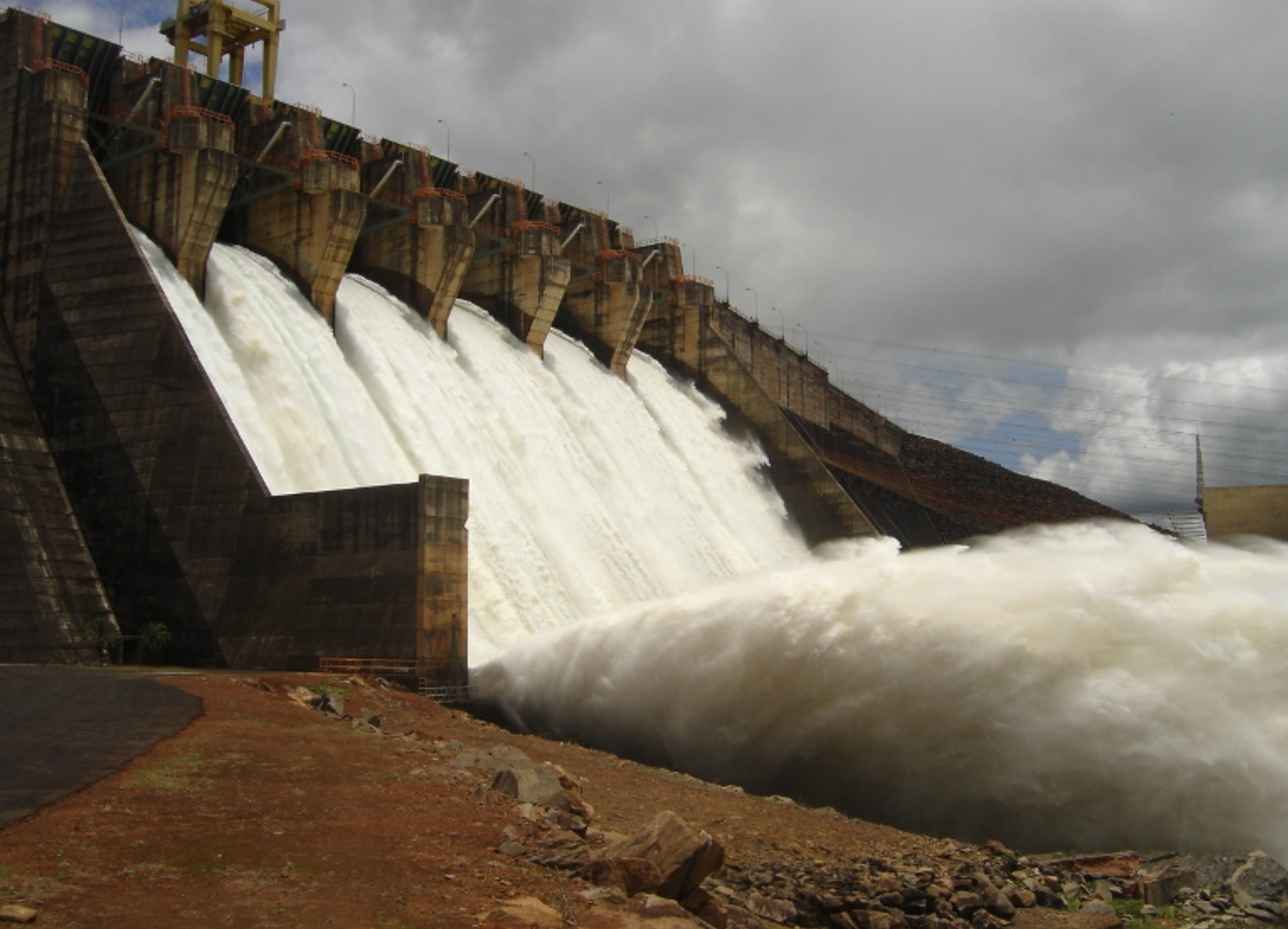Itumbiara Dam - Brazil

The dam owner is Eletrobras Furnas and it was constructed by ESA, Hidroservice and Mendes Junior. The Itumbiara Dam is a 7,000 metres (23,000 ft) long and 106 metres (348 ft) high earth-fill embankment dam with a concrete spillway and power house section. The earthen portion of the dam contains 31,500,000 cubic metres (1.11×109 cu ft) of earth fill while the concrete portion contains 1,800,000 cubic metres (64,000,000 cu ft) for a total structural volume of 33,300,000 cubic metres (1.18×109 cu ft). The dam's spillway contains six floodgates that are 15 metres (49 ft) wide and 9 metres (30 ft) high each. In total, the spillway has a 16,000 cubic metres per second (570,000 cu ft/s) discharge capacity.
After selection of the site for this hydroelectric project on the Paranaíba River near Itumbiara in Goiás, initial borings in the river bed revealed an extremely fractured zone near the base of the dense basalt flow on which the main dam would be founded. This zone was later seen to correspond to intersecting faults beneath the river bed. The region is mainly constituted of amphibole-gneiss, biotite-gneiss,quartzites, and basaltic rocks with some intrusions of more acid rocks, such as alkali rhyolite, rhyolite and some granodiorites.
The initial planned treatment was to remove weaker breccia from certain strata and replacement by concrete to improve the shear strength of the foundation. Later it became apparent that treatment or possibly elimination of the fractured seams was necessary in order to have the required factor of safety.
The considered alternatives were:
- excavating part of the foundation area;
- hydraulic excavation of the material filling the shear zones using high pressure jets;
- a series of trenches filled with concrete;
- concreted tunnels acting as shear keys.
To perform these activities it was required a thourough understandind of the foundation geology, specially the precise distribution of the sheared zones. Geomodelle assisted in the develpoment of a 3D geotechnical model used to define the REGIONS of reinforcement injections.